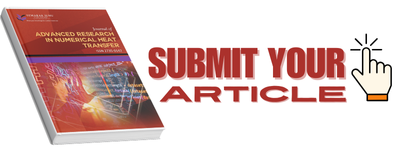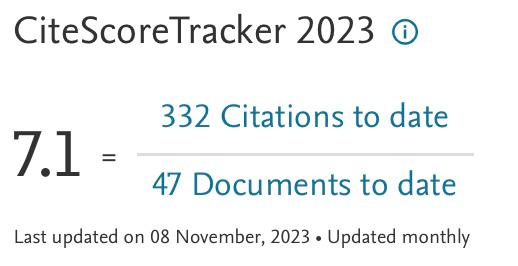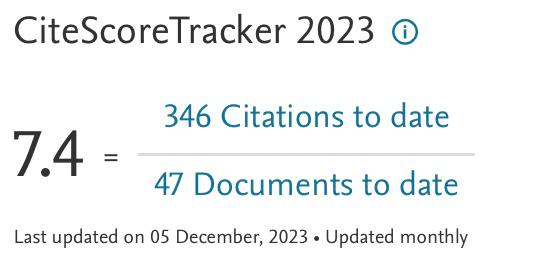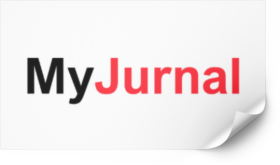
Information For Authors
General
Manuscripts submitted to the journal must be original work that has not been published or under consideration for publication elsewhere. The manuscript must be written in good English or Malay and should be no more than 20 pages in length inclusive of tables, figures and illustrations. All
submissions will be peer reviewed. Each submission must include a short cover letter that clearly states the significance of the work presented in their manuscript. The abstract and conclusions section must also highlight what is new and/or novel in the paper.
Conflict of Interest
All authors are requested to disclose any actual or potential conflict of interest including any financial, personal or other relationships with other people or organizations within three years of beginning the submitted work that could inappropriately influence, or be perceived to influence, their work.
Referees
Please submit, with the manuscript, the names, addresses and e-mail addresses of three potential referees. Note that the editor retains the sole right to decide whether or not the suggested reviewers are used.
Research Articles
Research Articles presents original research that is expected to present a major advancement and contribution to the body of knowledge or the particular area. Research Articles follows the format provided in the guide to authors. The content includes an abstract, an introduction, materials and methods, results and discussion and conclusion. The supplementary materials that support thepaper’s conclusions are welcomed.
Style
As far as possible, manuscripts should consist of the following sections: Introduction, Materials andMethods, Results and Discussion, and Conclusion. Each section and sub-section should be numbered using the Arabic numerals. Please use S1 Units for all scientific and laboratory data.
Subdivision – Numbered Sections
Divide your article into clearly defined and numbered sections. Subsections should be numbered 1.1
(then 1.1.1, 1.1.2, …), 1.2, etc. (the abstract is not included in section numbering). Use this
numbering also for internal cross-referencing: do not just refer to ‘the text’. Any subsection may be
given a brief heading. Each heading should appear on its own separate line.
Cover Letter
When you submit your article to a journal, you need to include a cover letter. Here is an example of a
cover letter
To,
The Editors
“[write journal’s title here, ex:CFD Letters (CFDL)]”
Subject: Submission of [Review Article, Original Article, Short Report, Case Series, Case Report, Letter
to Editors], titled, ” [Type or copy/paste here the title of the manuscript] “.
We are submitting a [Review Article, Original Article, Short Report, Case Series, Case Report, Letter to
Editors], titled ” [Type or copy/paste here the title of the manuscript] ” for consideration for
publication in ” CFD Letters” (CFDL).
I, [Insert name of the corresponding author here] (Corresponding author) certify that:
* The manuscript is original work of all authors.
* All authors made a significant contribution to this study.
* This manuscript has not been submitted for publication and has not been published in any other
journal.
* All authors have read and approved the final version of the manuscript.
Potential reviewers for this submission are: [Please suggest three potential reviewers with their emails]
Thank you
Sincerely,
CORRESPONDING AUTHOR DETAILS
Name
Complete Mailing Address
City
State
Country
Postal Code
Contact Phone Number: [Country prefix followed by full phone number] Contact Email:
Fax number: [Country prefix followed by full fax number] Title
Manuscripts should be headed by a concise title. Please include the full name(s) of the author(s), complete mailing address, telephone and fax numbers as well as e-mail address. In case of multiple authorship, please indicate the main author to whom all correspondence concerning the paper should
be directed.
Author Names and Affiliations
Where the family name may be ambiguous (e.g., a double name), please indicate this clearly. Present the authors’ affiliation addresses (where the actual work was done) below the names. Indicate all affiliations with a lower-case superscript letter immediately after the author’s name and in front of the
appropriate address. Provide the full postal address of each affiliation, including the country name and, if available, the e-mail address of each author.
Corresponding Author
Clearly indicate who will handle correspondence at all stages of refereeing and publication, also postpublication. Ensure that phone numbers (with country and area code) are provided in addition to the e-mail address and the complete postal address. Contact details must be kept up to date by the
corresponding author.
Abbreviations
Define abbreviations that are not standard in this field in a footnote to be placed on the first page of the article. Such abbreviations that are unavoidable in the abstract must be defined at their first mention there, as well as in the footnote. Ensure consistency of abbreviations throughout the article.
Abstract
Abstracts should not more than 200 words and written in English. The abstract should not only indicate the subject and scope of the paper but also summarize the principal results and
major conclusion along with at least three (3) keywords that could be useful for information – retrieval purposes. References should be avoided, but if essential, they must be cited in full, without reference to the reference list. Also, non-standard or uncommon abbreviations should be avoided, but if essential they must be defined at their first mention in the abstract itself.
Introduction
State the objectives of the work and provide an adequate background, avoiding a detailed literature survey or a summary of the results.
Methods and Protocols
Methods and Protocols are proposal of new or an overviews of recent technical and methodological developments. Articles should present a new experimental, engineering, scientific or computational method, test or procedure. The method described may either be completely new, or may offer a
better version of an existing method. Methods must be proven by its validation, its application to an important research question and results illustrating its performance in comparison to existing approaches. Articles should possess thorough assessments of methodological performance and comprehensive technical descriptions that facilitate immediate application by researchers in the field.
Tables
All tables should be kept simple and clear, and should be referred to in the text. They should be numbered, titled, and typed using double spacing on separate pages in the order of which they are referred to in the text. Place footnotes to tables below the table body and indicate them with superscript lowercase letters.
Illustrations
Illustrations including diagrams and graphs should be sharp, noise free and of good contrast. They should accompany the manuscript on separate sheets and numbered consecutively in the same order as they are referred to in the text. Line drawings should be in black ink on a white background and
lettering size must be large enough to permit legible reduction whenever necessary.
Mathematical Notation and Equations
All equations must be clearly typed, tripled-space and should be identified or numbered accordingly. Present simple formulae in the line of normal text where possible and use the solidus (/) instead of a horizontal line for small fractional terms. In principle, variables are to be presented in italics. Powers of e are often more conveniently denoted by exp. Number consecutively any equations that have to be displayed separately from the text (if referred to explicitly in the text).
Results
Results should be clear and concise.
Discussion
This should explore the significance of the results of the work, not repeat them. A combined Results and Discussion section is often appropriate. Avoid extensive citations and discussion of published literature.
Conclusions
The main conclusions of the study may be presented in a short Conclusions section, which may stand alone or form a subsection of a Discussion or Results and Discussion section.
Acknowledgements
A brief acknowledgment should be included at the end of the manuscripts, before the list of references. List here those individuals who provided help during the research (e.g., providing language help, writing assistance or proof reading the article, etc.).
Reference Style
All publications cited in the text should be presented in a list of references following the text of the manuscript. In the text make references using a number in square brackets on the line (e.g. “Since Ahmad [1] has shown?”) and the full reference should be given in a numerical list at the end of the paper.
References should be styled and punctuated according to the following examples (Chicago style):
journal article [1]; book [2]; proceedings [3].
[1] Chen, Shiyi, and Gary D. Doolen. “Lattice Boltzmann method for fluid flows.” Annual review of fluid mechanics 30, no. 1 (1998): 329-364.
[2] Bejan, Adrian. Convection heat transfer. John wiley & sons, 2013.
[3] Tamura, I., Y. Tomota, and M. Ozawa. “Strength and ductility of Fe-Ni-C alloys composed of austenite and martensite with various strengths.” In Proc. Conf. on Microstructure and Design of Alloys, Institute of Metals and Iron and Steel Institute, London. 1973, 1,(129), 611-615. 1973.
Appendices
If there is more than one appendix, they should be identified as A, B, etc. Formulae and equations in appendices should be given separate numbering: Eq. (A.1), Eq. (A.2), etc.; in a subsequent appendix, Eq. (B.1) and so on. Similarly for tables and figures: Table A.1; Fig. A.1, etc.
Color artwork
Please make sure that artwork files are in an acceptable format (TIFF (or JPEG), EPS (or PDF), or MS Office files) and with the correct resolution.
Copyrights
Copyright of articles belongs exclusively to Penerbit Akademia Baru. This copyright covers the rights to reproduce the article, including reprints, electronic reproductions or any other reproductions of similar nature.
Submission Checklist
The following list will be useful during the final checking of an article prior to sending it to the journal for review. Please consult this Guide for Authors for further details of any item. Ensure that the following items are present:
(1) One author has been designated as the corresponding author with contact details:
• E-mail address
• Full postal address
• Phone numbers
(2) All necessary files have been uploaded, and contain:
• Keywords
• All figure captions
• All tables (including title, description, footnotes)
(3) Further considerations
• Manuscript has been ‘spell-checked’ and ‘grammar-checked’
• References are in the correct format for this journal
• All references mentioned in the Reference list are cited in the text, and vice versa
• Permission has been obtained for use of copyrighted material from other sources
• Color figures are clearly marked as being intended for color reproduction on the Web




















